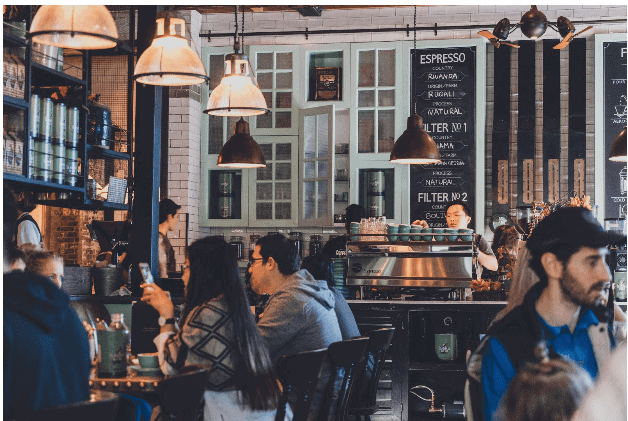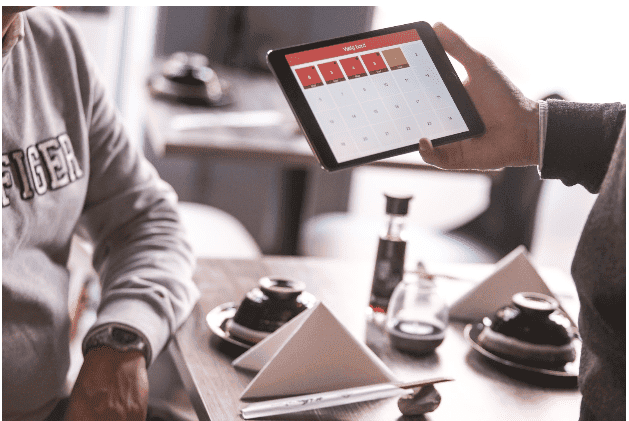Want your restaurant to stand out from the rest? You’ve got a great menu and now want to excel at service? Consider, a full stack restaurant management system.
A restaurant management system is the complete integrated software system for your restaurant that helps you stay on top of all your essential processes. It is the solution a restaurant needs, across online ordering, table reservations, billing, inventory management, accounting, security, marketing & CRM, analytics, loyalty, payments, employee scheduling, and payroll management.
A restaurant management system lets your software carry out the day to day functions. Customer data that comes into your systems is then forwarded to CRM, Loyalty, Feedback softwares. All this works in perfect harmony via the restaurant management system.
You could further think of these 2 important business functions like this – Operations and Marketing. And technology today plays a significant role in carrying out these 2 broad functions. It either automates the process or simplifies it, either way, it helps your restaurant run better, faster.
Why you need a Restaurant Management System?
A restaurant management system simplifies your operations and lets you focus on the tasks that really matter: the food you cook and the guest experience.
Your restaurant management technology can handle (almost) everything else.
Let’s take a look at what a full stack restaurant management system can really do:
Handles your Restaurant operations
Your restaurant management system takes care of your restaurant operations – i.e. billing, printing KOTs, ticketing and financing. The modern-day cloud restaurant POS is power packed with features that will be very advantageous for your business.
- Speedy billing: Customers want fast service. In fact, faster the service more likely are your customers to return.To improve customer experience, the turnaround time (or table flip time) is one important metric every restaurant should keep their eye on.
- Remote accessibility: Your Cloud POS will not only work on-premise but can be operated from anywhere (as long as it is installed on your device).
- Data security: Your data is a lot safer when it data is stored on remote servers. So a significant reduction in spam/hacking threats for your restaurant data. An increasingly important feature to consider.
- Constant software updates: The modern cloud POS does not run the risk of becoming obsolete as your software is constantly updated to be in-line with the latest features and technology
- Cost effective: A cloud POS allows you to make monthly subscription payments instead of a fixed and high one time upfront cost (that was done for the traditional restaurant POS).
Data Management and Analytics
With data coming in through the POS – the next step is critical. Data management is one. Data is better managed with a Cloud POS as mentioned above – with usage of the best remote servers (like AWS/Rackspace for instance), high data security and constant software updates, your data management needs are taken care of.
The second is data reporting and analysis. This part is more strategic in nature. Once data comes in, you as a restaurant owner/manager would want to be on top of things when it comes to getting insights from data.
Supports your Marketing initiatives
Customers should be constantly reminded of what your brand can offer them. Restaurant POS is an excellent channel for getting to know your customers better. How? It has all the data on order history and contact details like email and in some cases even phone numbers.
Bucketing your restaurant’s customers into a few neat categories would help in automating the marketing campaigns and personalising the outreach process. Your own creativity would obviously matter, through the use of good content and visuals to grab attention and communicate.
Complements your Online Ordering software and third-party aggregator linkages
Online Ordering is setting up your own platform where you can directly get orders from your customers. You save on the commissions to the middlemen (food aggregators).
This data which comes in, gets stored centrally and becomes the hub for further marketing, loyalty management and analytics. Similarly, when you register yourself with third-party aggregators, data again gets pushed to your Restaurant Management System.
Takes care of Inventory Management
You as a restaurant owner want to get updates regarding the inventory status at the restaurant. What is not getting utilised, what items are getting depleted. This helps you manage your inventory with timely interventions.
Integrates restaurant functions across outlets
Your restaurant POS is the central tool. The nucleus, if you will. As soon as the server punches in customer data, it is fed into the POS. The POS then traffics that data and multiple systems come into play.
Third party Order Aggregator tools, Online Ordering System, CRM, Analytics, Inventory and Loyalty systems are all closely linked to your restaurant POS. Also, a restaurant POS allows you to track your restaurant’s performance centrally, allowing you to be on top of the restaurant management process.
Provides a Single neat interface for all your restaurant functions
Wouldn’t it be great to have a single system to manage your entire business? Quick training of new employees is a growing challenge for restaurants. On the job training will be faster and easier when you have a single software that encompasses all the important functions of your restaurant.
Summing Up
With the growing need for automation and simplification of processes, restaurants are increasingly taking to restaurant management systems to help them manage their business better.
Restaurant technology is evolving and customers want to see you making use of them. Adapting to the changing landscape of restaurant technology is the need of the hour to stay relevant in the industry.








